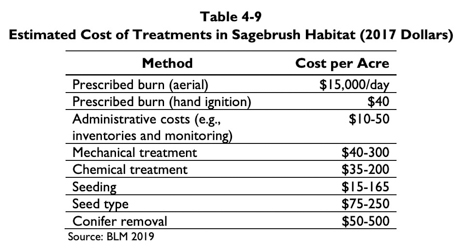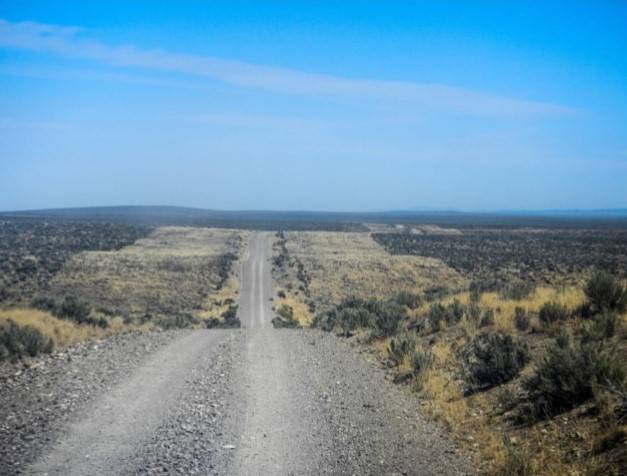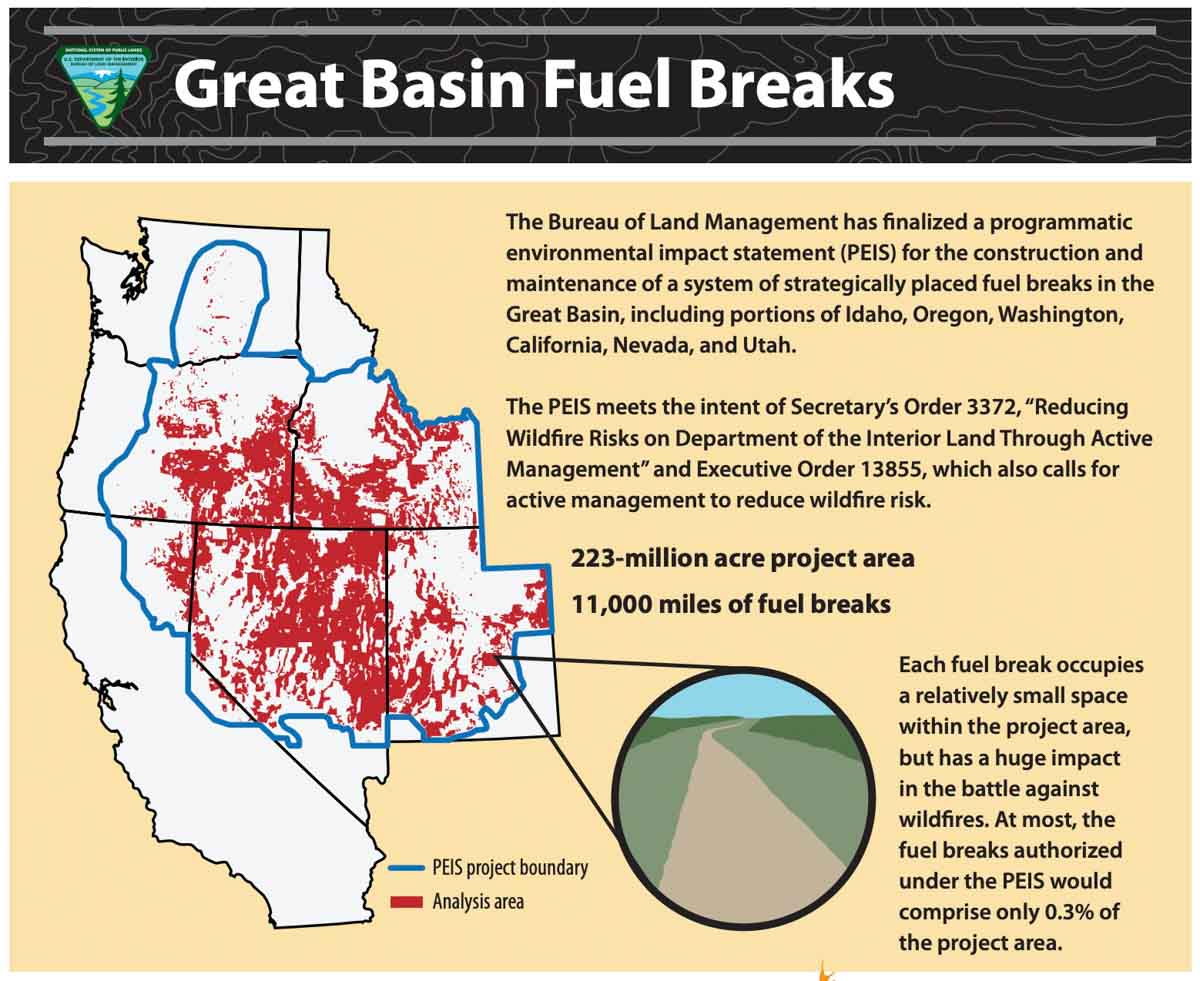On Friday, February 14 the Bureau of Land Management (BLM) released the Final Programmatic Environmental Impact Statement (PEIS) for Fuel Breaks in the Great Basin. This Final PEIS provides for the construction and maintenance of a system of up to 11,000 miles of fuel breaks within a 223 million acre area to aid in the control of wildfires in portions of Idaho, Oregon, Washington, California, Nevada, and Utah.
The Preferred Alternative outlined in the PEIS analyzes manual, chemical and mechanical treatments, including prescribed fire, seeding, and targeted grazing to construct and maintain a system of fuel breaks. These treatments would be implemented along roads and rights-of-way on BLM-administered lands to minimize new disturbance and wildlife habitat fragmentation and to maximize accessibility for wildland firefighters.
The estimated total cost of developing and producing the PEIS was $2.3 million.
“Wildfires pose an enormous threat to rangelands in the Great Basin – rangelands that people depend on for both recreational opportunities and their livelihoods, and that wildlife rely on for habitat,” said BLM Deputy Director for Policy and Programs William Perry Pendley. “Fuel breaks are one of the most important tools we have to give wildland firefighters a chance to safely and effectively contain rapidly moving wildfires and potentially reduce wildfire size.”

Wildfires in sagebrush communities in the Great Basin states are becoming more frequent and larger, fueled by large, unbroken swaths of grasses, brush and other vegetation. Over 13.5 million acres of historically sagebrush communities on BLM land burned within the project area between 2009 and 2018. Wildfires that consume sagebrush provide the opportunity for invasive annual grasses to increase, making future large and severe wildfires more likely.

The concept behind fuel breaks is to break up or fragment continuous fuels by reducing vegetation in key locations. When a wildfire burns into a fuel break, the flame lengths decrease and its progress slows, making it safer and easier for firefighters to control.
An electronic copy of the Final PEIS and associated documents is available for public review for 30 days on the BLM Land Use Planning and NEPA register at https://go.usa.gov/xnQcG. Other documents related to the EIS are at the BLM’s ePlanning website. The BLM will issue a Record of Decision after the end of the public review period.




